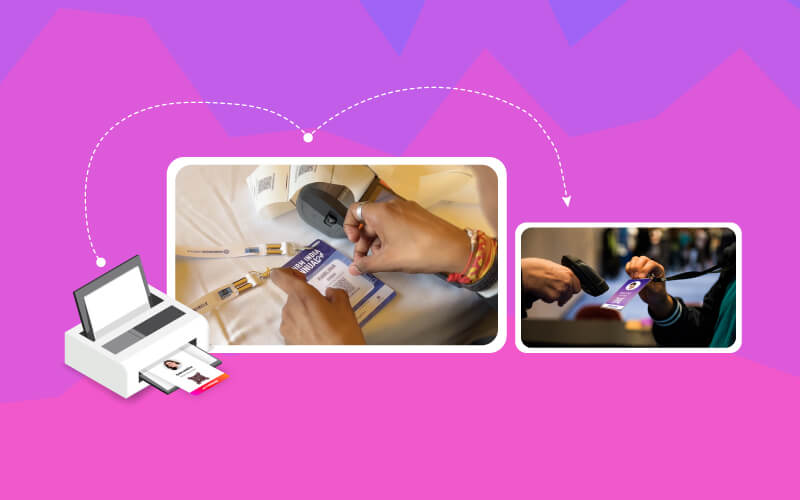Managing events, whether they are small gatherings or large-scale conferences, is a challenging endeavor. All of these can be readily coordinated if the appropriate tools are in place, reducing confusion. This is where an event attendee management system (EAMS) comes in, providing an organized and efficient method for managing all elements of guest contact. This blog examines the important role of an EAMS in converting event management from a chaotic nightmare to a streamlined process that ensures clarity and success.
Table of Contents
Understanding Event Attendee Management Systems
An event attendee management system (EAMS) is a comprehensive software package designed to handle event attendance. This covers registration procedures, ticket distribution, communication with guests before their arrival, assistance with check-in at the venue, and post-event follow-up. When its features are unified into a single platform, an EAMS reduces event organizers’ labor while also improving the overall attendance experience.
Components
To ensure seamless event execution and improved overall attendee satisfaction, EAMS are indispensable, as they comprise a spectrum of tools for optimizing administrative procedures and participant experiences. Here are the key components:
- Registration and Ticketing: It makes it easy for attendees to register and buy tickets online, this process is important for an attendee management system.
- Communication Tools: It enables automated email and text message communications that are crucial for effective event management.
- Check-In Systems: It shows practical event attendee management examples since it allows quick and effective attendee check-ins, often via mobile apps or QR codes.
- Data Management: Gathers and arranges details about participants together thereby enabling a better understanding of information and customization making it indispensable for holistic attendee management.
- Post-Event Feedback: Facilitates gathering feedback from attendees and analyzing it for future improvements thereby accomplishing a cycle of event attendee management.
Importance
A specialized event attendee management system is critical for assuring the success of an event. This technique not only minimizes the effort of organizers but also assures that participants receive professional service from start to finish. Event attendee management examples from successful events underscore the importance of a robust system.
Benefits of Using an Event Attendee Management System
An EAMS offers numerous benefits that streamline the process of organizing and managing events. Here are some key advantages:
1. Efficiency
An event attendee management system (EAMS) saves time and effort by simplifying the tasks it takes to manually handle the data of event participants in every possible way. Through automation, say, in registration, ticketing, and correspondence; planners can divest concentration to other equally important event concerns, thus improving the management of guests.
2. Accuracy
There are so many mistakes that manual data entry can lead to, in the event it causes so many problems. An EAMS collects and processes data thus guaranteeing accuracy in the data entered into it. This eliminates occurrences of mistakes; moreover, it creates a store for all reference materials thereby making it possible to study different issues related to registration.
3. Communication
An effective event demands effective communication. Automated tools within EAMS enhance these capabilities by prompting attendees on the latest happenings, reminding them about certain aspects, and sending them personal messages such as thank you notes. Hence the message goes out enough on all fronts not leaving behind any stone unturned when it comes to ensuring each participant is always informed and actively involved.
4. Personalization
The EAMS allows for the personalized attendee experience which makes an event memorable because it enables the organizers to accumulate and evaluate the preferences and behavior of participants, thus allowing them to give specialized experiences that meet the nexus of the individual’s demands and expectations. Implementing personalized experiences can greatly increase the satisfaction and participation of participants, demonstrating how a full-featured management system for guests can be beneficial.
Key Features of a Robust Event Attendee Management System
A robust event attendee management system is pivotal for the seamless execution of any event. Here are key features that define such a system:
1. Registration and Ticketing
Every event attendee management system (EAMS) must have an online registration and ticketing system as essential functionality. These features simplify the registration for the attendees and give the organizers immediate access to registration data and participants’ demographics at the same time. Event participant management largely depends on this information.
To read more: Online Event Registration & Ticketing
2. Mobile Integration
Mobile integration is crucial today digital age. With strong EAMS capabilities that allow mobile event apps on the road access to events, schedules, and real-time updates. Mobile event apps also streamline the check-in process, so that people can check in swiftly once they have arrived. Mobile event apps serve as a typical example of improving convenience and efficiency through modern event attendee management systems.
3. Data Analytics
Utilizing data analytics in comprehending guest behavior and enhancing future events. A comprehensive Event Management System (EAMS) comes with detailed analytics tools and reporting capabilities through which event planners can monitor important statistics like attendance trends, and numbers despite presence. This data-driven approach using data allows managers to make informed decisions. This also assists them in boosting their events with the high value being put on efficient attendee management.
4. Security
It is of utmost importance to ensure data security and privacy when handling attendee information. An EAMS can be trusted to store all its data securely and according to relevant data protection laws. Some of the features that are very important in the protection of delicate information from participants are encryption of data storage, secure payment processing, and access control systems which are key to efficient management of everything to do with participants in events.
Real-World Examples and Success Stories
Real-world examples and success stories provide tangible evidence of the effectiveness of various strategies and tools in event management.
1. Case Studies
Several events have implemented EAMS well, leading to more gains in terms of attendee management and the general implementation of the event. Such as, a large technology conference can employ EAMS, and use it to register thousands of attendants making sure that they can check in smoothly and efficiently. The system also handles registrations for sessions, which is important because it gives organizers immediate feedback on what sessions are currently drawing the most attention. These examples of handling event attendees show how an influential system can be created.
2. Testimonials
Many event organizers that routinely utilize EAMS express satisfaction and benefit. Consider how an event organizer for a business seminar or conference might appreciate speeding registration and communication, resulting in a more planned and professional event. Testimonials from pleased users illustrate EAMS’ revolutionary influence on event guest management.
Choosing the Right Event Attendee Management System
1. Criteria
Selecting the right event attendee management system is vital for making sure that it is effective. Key factors to consider include:
- Scalability: The system should manage the event’s size and complexity, whether it’s a small meeting or a large conference.
- Ease of Use: Both organizers and participants want a user-friendly interface.
- Cost: Examine the pricing structure to verify that it fits into your budget.
- Customer Support: To fix any issues that may arise, it is critical to have dependable customer service.
2. Comparison
There are various preferred event attendee management systems existing in the market with each of them having their strengths and weaknesses. For example, different platforms offer a range of features tailored to different event types and sizes. If you compare the options according to your event needs, you will be able to arrive at an informed decision. Look for some real-world event attendee management examples from various industries that would help you in the selection of what suits your events best.
Conclusion
In conclusion, an event attendee management system is an invaluable tool for transforming event management from chaos to clarity. By streamlining administrative tasks, ensuring data accuracy, enhancing communication, and offering personalized experiences, an EAMS can significantly improve the success of your events. As you plan your next event, consider exploring attendee management system options to experience the benefits firsthand. Event attendee management examples from various successful events highlight the importance of adopting a robust system to achieve these benefits.
Simplify Event Planning Hassle-Free





















